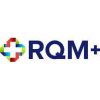The use of 3D printing for medical devices opens tremendous opportunities in health care. It allows users to test and adjust components more quickly than traditional manufacturing and enables the creation of personalized products, such as custom prosthetics. However, questions remain about what oversight the FDA will have over point-of-care usage and how long it will take for regulators to publish the specifics.
All medical device manufacturers must submit tests and results to the FDA to show that their products meet regulatory requirements and perform safely for their intended uses, and medical devices must meet these standards regardless of whether they are manufactured using 3D printing or more traditional means.
The FDA also has a 501(k) premarket notification process, which allows a faster review of products that are substantially similar to those already on the market. However, regulatory requirements get more complicated when we look at devices intended to be printed at the point of care.
Regulatory Challenges of 3D-Printed Point of Care Devices
In 2021, The FDA published a discussion paper identifying some of the challenges surrounding 3D-printed point of care (3DPOC) products and invited people to comment on the content. The document confirmed that manufacturers must abide by the Quality System (QS) Regulation under 21 CFR Part 820, which covers design, manufacturing, packaging and labeling of all finished medical devices, regardless of their production methods.
However, people have raised several concerns that are not addressed in the FDA’s paper, including ambiguity about whether risk factors might vary based on how or where a facility makes a 3D-printed device for point-of-care use.
Questions about a healthcare center’s potential liability related to printing a high-risk medical device were also raised, as the FDA’s current oversight does not extend to hospitals, healthcare providers or other nonmanufacturing facilities that may use 3D printing to meet patient needs. So the issue becomes, who is the manufacturer—the person who develops the printer, the design and the cartridge materials or the one printing the device—and when is that line crossed?
The situation is similar to what we see in the food industry. Foodborne illness is a major challenge and health threat. When people get sick, investigators have to determine if the problem started at the farm that grew the crops, the restaurant that served the food, the manufacturer that put the consumables on the market or elsewhere.
Where does the blame lie if a healthcare provider makes a 3D-printed device for a patient and the product causes harm? Was it an issue with the printer, the device’s materials, the software programming or another aspect? Relatedly, medical malpractice insurance for providers may not cover the products printed on-site for patient use.
In addition to federal oversight and liability questions, medicine is a state-regulated field in the U.S., which also affects 3D-printed medical devices. In addition to FDA regulations for 3D-printed medical products, state laws will dictate the prescribing, administering and distributing of those items to patients. Such legislation may also affect who can check the fit or functionality of a product.
The ability to make medical devices using 3D printers is exciting. However, it also blurs the distinction between the practice of medicine and manufacturing. When the person providing care is also making a device for a patient, oversight becomes more challenging.
As we enter the relatively new territory of 3DPOC devices, it will be interesting to see how regulators, providers and manufacturers come together to create implementable regulatory framework that will allow patients access to this new field of device development.







